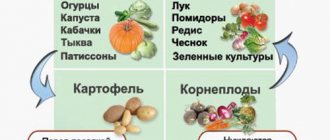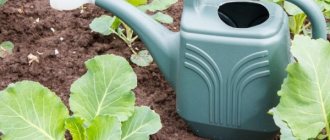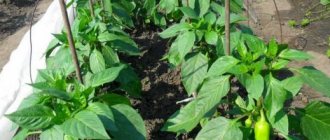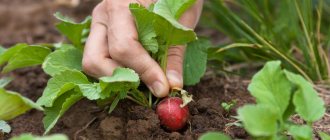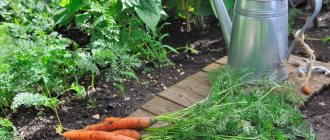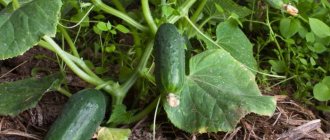Heads of cabbage are ripening in the beds, and are you already thinking about what crops to plant next year after cabbage? This is correct, because then it will be easier to prepare the ground for the new season.
Not all summer residents know which crops can be planted after which, and unwittingly deprive the plants and soil of a well-deserved rest. As a result, the soil becomes acidic, new garden crops become diseased, and all you can do is envy your neighbors’ crops. But the situation can be changed if you follow the rules of crop rotation, i.e. Change the planting location for each vegetable every year.
This simple principle keeps soil fertile longer because each vegetable uses nutrients differently. Pests and dangerous bacteria will not be able to accumulate in the soil for years, and subsequent crops will grow stronger than their predecessors, which suffer from certain diseases. As in the animal world, not all plants are “friends” with each other and may not take root in the beds where their competitor grew. This again depends on what substances they consume and in what quantities.
As for cabbage, this vegetable takes a lot of nutrients from the soil, because... its root system can penetrate to a depth of 1 m. During the growth period, cabbage needs regular feeding, and after harvesting the bed remains severely depleted. In addition, cabbages are food for many pests; cabbage is often affected by clubroot, powdery mildew, black spot and other diseases. Even if you took all measures to save the crop, some insects and bacteria could remain in the soil. And next year nothing will stop them from continuing to reproduce and feed again.
- Folk remedies for cabbage pests - how to treat plants
We’ll tell you how popular rumor and experience advise dealing with cabbage pests.
During the season, cabbage releases a lot of toxins into the soil, which are dangerous for many crops.
Therefore, before planting a new crop on cabbage beds, you need to take into account the characteristics of the plants. Do they have enough nutrients, is the “cabbage inheritance” dangerous for them? And there are many such plants. Let's find out in more detail what is best to plant after cabbage, and which plants should be abandoned.
What can you plant after cabbage?
Even if at the end of the season you apply organic matter and mineral fertilizers to the former cabbage beds, not all plants will be able to develop properly here. Therefore, preference should be given to unpretentious crops that do not greatly deplete the soil, or to plants that have a different nutritional regime. Popular among such crops are carrots, eggplants, potatoes, celery, parsley, dill, as well as some other plants, which we will discuss in more detail below.
After planting eggplants in beds from early cabbage, you can get a particularly rich harvest.
If you are interested in what you can plant after cauliflower, then the list of plants is practically no different from white cabbage varieties. Green crops, pumpkins, zucchini and squash will grow well in former cabbage beds. Also feel free to plant tomatoes, cucumbers and potatoes.
Now let’s take a closer look at what other crops should be planted to replace cabbages.
The effect of cabbage on the soil
To know what you can grow after a crop, you need to understand what effect it has on the soil. This vegetable is characterized by a long growing season. And only with sufficient nutrition does it form large heads of cabbage. Therefore, first of all, the vegetable needs nitrogen, which it takes from the soil in large quantities.
It should be taken into account that the plant forms a powerful root system, the length of which is 40-100 cm. This means that the cruciferous crop leaves behind depleted soil for the entire length of its underground part.
To understand which vegetables are best to harvest after, you also need to take into account common pests and diseases. After all, many larvae and pathogens remain overwintering in the ground. This means that the plants planted in this area will also be subject to attack next year. But correct crop rotation will eliminate the possibility of negative influence of pests and pathogenic microflora on the cultivated crops.
Important! The leaves of the cabbage vegetable, when released into the soil, release colin substances that inhibit the development of plants from the same family as it.
Is it possible to plant cucumbers after cabbage?
Even necessary! Cabbage is an ideal predecessor for cucumbers, rivaled only by tomatoes and potatoes. The fact is that cucumbers are quite unpretentious and do not need abundant feeding, so the modest nutritional composition of the soil will not bother them too much. However, if you want to get strong and tasty greens, you still can’t do without fertilizers.
Next to corn, cucumbers will grow faster and produce a good harvest. Corn protects cucumbers from the wind and keeps their stems upright, protecting them from fungal diseases.
- Secrets of July sowing of cucumbers
Pick cucumbers all summer? Easily!
- How to grow cucumbers - 10 best articles from Ogorod.ru
Experience-tested tips and recommendations for all stages of growing your favorite vegetable!
The role of alternating vegetables in a summer cottage
The yield of any crop, including bell pepper, directly depends on the choice of planting site in the garden and compliance with crop rotation. Therefore, it is very important to plan the location of the plantings and their neighbors in advance before planting. Crop rotation is certain rules in planting crops; you need to know exactly which vegetables can be planted and after whom. The amount of harvest and the health of the plants depend on the correctness of fruit rotation.
Bell pepper on a bush
Fruit change should be carried out annually, regardless of the size of the garden. It allows you to distribute water consumption most rationally and saturate the soil with important nutrients, thereby ensuring its fertility. Also, proper crop rotation helps reduce the spread of diseases, pests and weeds.
Each vegetable treats weeds differently. So, most often the beds are left without weeds after cabbage, peas or potatoes, making it easier to grow other crops in their place. Each crop has its own biological characteristics, therefore, to prevent the appearance of insects and weeds, it is worth alternating them so that they are in their place no earlier than 4 years. This rule helps prevent soil depletion and increase its fertility.
Is it possible to plant tomatoes after cabbage?
The answer is yes, plant it for health. Tomatoes will grow especially well in beds of early varieties of white cabbage and cauliflower. The main thing is that the area is protected from the wind. In the fall, dig the bed deeply and add 5 kg of humus per square meter, as well as 25 g of double superphosphate and potassium salt.
When planting tall varieties, do not forget to install supports. If there was a bed nearby with potatoes, eggplants, tomatoes or other nightshade crops, additional protection from pests will be needed.
- All garden pests in tables with descriptions, photos and control measures
We have compiled a “dossier” for you on each pest - save this collection!
How to organize crop rotation on a small plot
First in line is the cucumber, which requires the addition of organic matter.
In early spring it can be compacted by planting radishes. Behind it, this bed next year can be occupied by early potatoes or instead of them by any of the crops: parsley, parsnips, celery.
In the third year, we plant cabbage in this bed, but first add organic matter and, of course, calcium nitrate against clubroot. First, we compact the cabbage by planting spinach, and then sowing chervil.
Next in line are beets, which need liming of the soil before planting. Beet plantings in early spring can be compacted with lettuce.
Then we will plant onions in this bed, but first we will add organic matter. You can thicken the onion with watercress.
Then the carrots will have their turn. We do not compact its plantings.
Next year we will add organic matter and plant zucchini. After them, it would be good to plant peas or beans, and plant radishes along the very edge in mid-July.
The next year we will make a bed and sow any of the crops: turnips, radishes or rutabaga, but additional organic matter must be added under the rutabaga.
Next, you can add organic matter and plant peppers in the garden bed under the cover of a film stretched over arcs.
Last in line is garlic. After this, we will return the cucumber here again, adding organic matter to it.
If this line seems too long, break it up into two or three and go through each group of crops independently. For example:
- cucumber—potatoes—cabbage, together with celery—pepper;
- potatoes—cabbage—carrots or parsley—turnips, rutabaga or radishes—onions, garlic;
- root vegetables—strawberries—strawberries—strawberries—cabbage—potatoes;
- cabbage—carrots, beets, parsley—radishes, turnips, radishes—green crops, onions;
- strawberries—strawberries—strawberries—strawberries—peas—green crops—garlic.
Most often, peppers, tomatoes and cucumbers are grown in greenhouses. Be sure to swap cucumbers with tomatoes every year, and peppers grow well next to tomatoes: in this case, aphids do not touch them, but prefer the proximity of cucumbers.
I have cucumbers, tomatoes, peppers and eggplants growing in the same greenhouse. I just swap them out every year.
Is it possible to plant zucchini after cabbage?
- Zucchini: planting, growing and care in open ground
We'll tell you how to plant zucchini and take care of them until harvest.
If you decide to plant zucchini instead of cabbage, then this will be a good idea. But it’s better to choose a bed where early or mid-season varieties of cabbage grew, otherwise the zucchini will not yield as much as you would like. At the end of the season, dig up the bed using a spade and add a bucket of rotted manure, 30 g of superphosphate and 15 g of potassium sulfate per square meter.
Like zucchini, pumpkins and squash do not grow well in plots of late varieties of cabbage.
Advice on agricultural technology
Compliance with the rules of agricultural technology increases the chances of obtaining a high yield. Therefore, you need to study them in advance.
Advice from experienced gardeners:
- If it is not possible to observe crop rotation due to the small size of the plot, it is necessary to plant green manure after harvesting. The best of them are annual lupine, beans, sainfoin, soybeans, lentils, seradella, and peas.
- To repel pests during the season, mixed plantings of cabbage vegetables with marigolds are recommended.
- Cruciferous crops can only be returned to the site after three years.
- The close proximity of cruciferous vegetables to celery is unacceptable, since the latter attracts the attention of white butterflies.
Is it possible to plant onions after cabbage?
Onions grow well in areas where organic matter has been generously added. And cabbage beds are just like that, so plant this vegetable on them next year. Also, onions will grow healthy after potatoes, tomatoes, cucumbers, and zucchini. And if you alternate planting onions and carrots in the garden every year, these plants will delight you with high yields.
Garlic will take root well in place of early cabbage and potatoes. But remember that this crop is often affected by stem nematode, so it cannot be planted in the same place twice in a row.
What to plant after late blight-stricken plants to improve soil health?
Onion garlic. Bulbs are rich in natural phytoncides, which disinfect and heal the earth. After the tomato planting season, it is enough to give the soil a rest once by planting onions or garlic, and by next year you can plant tomatoes again.- Green manure (mustard, cereals, phacelia). Mustard and phacelia are natural disinfectants. Cereals renew and improve the soil.
These plants restore the microflora after diseased tomatoes and create favorable conditions for the growth of subsequent plants.
What crops will do best in the garden?
To get a high yield after tomatoes, it is better to plant:
- different types of cabbage;
- legumes;
- cucumbers;
- roots.
To improve soil health, it is better to plant after tomatoes:
- onion;
- garlic;
- mustard;
- phacelia.
What absolutely cannot be cultivated?
- Nightshades (potatoes, peppers, eggplants, physalis). Plants of the same family as tomatoes have similar nutritional needs, take the same microelements from the soil, and are affected by the same diseases. All this negatively affects the harvest.
- Strawberries, wild strawberries. Strawberries are sensitive to late blight, which affects tomatoes. Tomatoes strongly acidify the soil. In such an environment, strawberries will not be able to fully grow and bear fruit.
- Melons (watermelons, melons, pumpkins). The roots of tomatoes and melons are located at approximately the same depth and deplete the same layer of soil. Therefore, melons will grow and develop poorly after tomatoes and will produce a weak harvest.
Not all plants can be planted after tomatoes. Some crops develop well in the place where tomatoes grew. It is not recommended to plant certain plants after tomatoes. In cases where it is not possible to change the planting site, a drop in yield can be avoided if you apply fertilizers correctly and treat the soil and plants in a timely manner to remove pathogens. Knowing and applying the principles of crop rotation in the garden, you can always get a good result.
Will beets grow well after cabbage?
- 6 steps to a bumper beet harvest
Growing beets is quite easy, but not everyone succeeds in getting a super harvest. We show you how to achieve this in 6 simple steps!
Beets grow well after tomatoes, cucumbers, potatoes and legumes. Somewhat worse - after peas. But after cabbage, this root vegetable does not feel very good. Although, according to the observations of some summer residents, beets give a decent harvest if planted after early varieties of cabbage.
Compatible plants
To figure out what can be planted after beans, you need to study the rules of compatibility of this crop with other species. Phaseolus, like peas, belongs to the pod species. It is very demanding on the place of growth and the quality of the soil. Essentially, she needs:
- nutritious soil;
- moderately moist soil;
- constant weeding and loosening.
Compliance with all the above rules will lead to the enrichment of the soil with nitrogen, it will become loose, and virtually no fertilizer will be required. So the answer to the question of what grows well after beans is quite simple - everything.
Note! An interesting feature of beans is the fact that they are short-day plants, that is, 10-12 hours of light are enough for their normal growth.
Another factor that needs to be taken into account before planting in the spring is that the soil where the beans grew cannot be additionally fertilized with nitrogen. Otherwise, the soil will be oversaturated with this element and the plants will begin to “fatten.”
What not to plant after cabbage
Many plants will feel uncomfortable in beds where cabbage grew last year. It is better not to plant them, so as not to provoke an invasion of pests and a surge in diseases. First of all, these are all plants related to cabbage from the Cruciferous family:
- swede,
- mustard,
- daikon,
- watercress,
- shepherd's purse,
- rape,
- radish,
- radish,
- turnip,
- rapeseed,
- turnip,
- horseradish, etc.
Is it possible to plant another variety or hybrid of this vegetable after cabbage? Also, after cabbage, beets, garden strawberries (strawberries), and legumes (beans, peas, soybeans, lentils, etc.) will grow worse.
It is undesirable because, as mentioned above, this can lead to plant disease and reduced yield. Despite the resistance of hybrids to diseases and pests, they are unlikely to like depleted soil, and it will take a lot of time to restore it. Varietal cabbage will have a hard time at all, because... her immunity in such beds will be greatly weakened. Therefore, after cabbage, plant other plants, and after 2-5 years you can return the queen of the beds to its old place.
If you do plant cabbage after cabbage, take care to protect it from the most common pests: cabbage flies, white butterflies, slugs, mole crickets and cabbage cutworms. To do this, plant marigolds among the heads of cabbage; they will repel insects with a pungent odor and will not take away much moisture and nutrition from the plants.
Over the years, you may have found some patterns in the way other crops grow in former cabbage beds. Some conclusions may not coincide with generally accepted ones. In this case, share your observations with other readers. And if you are interested in the topic of crop rotation, you can also read what should be planted after cucumbers and early potatoes.
Crop rotation summary table for peppers
Even an inexperienced gardener can carry out the correct preliminary layout of the beds without any problems if he uses the popular classification of crops into 4 large groups:
- leafy (salads, greens);
- fruit (tomato, cucumber, cabbage);
- root vegetables (carrots, beets, radishes);
- legumes (peas, beans, soybeans).
The basic rotation algorithm by season is: “fruit -> root crop -> bean -> leaf.”
Then you need to detail the fruit change, based on specific cultivated species. However, the poor succession of related plants with similar diseases, pests and nutrient requirements should not be overlooked.
The crop rotation table for peppers is as follows:
| Predecessors | Followers | Neutral crops | Neighbours |
| Spinach, basil, lettuce, dill, parsley, cabbage, cucumbers, marjoram | Beets, carrots, radishes, turnips, radishes, daikon, beans | Head lettuce, onion, garlic, peas, legumes, asparagus | Greens, salads, carrots, beans, cumin, onions, garlic, celery, cilantro |
Cucumbers and peppers are grown in the same bed with a minimum interval of 3-4 years, but it is better when this period is 5-6 years.
